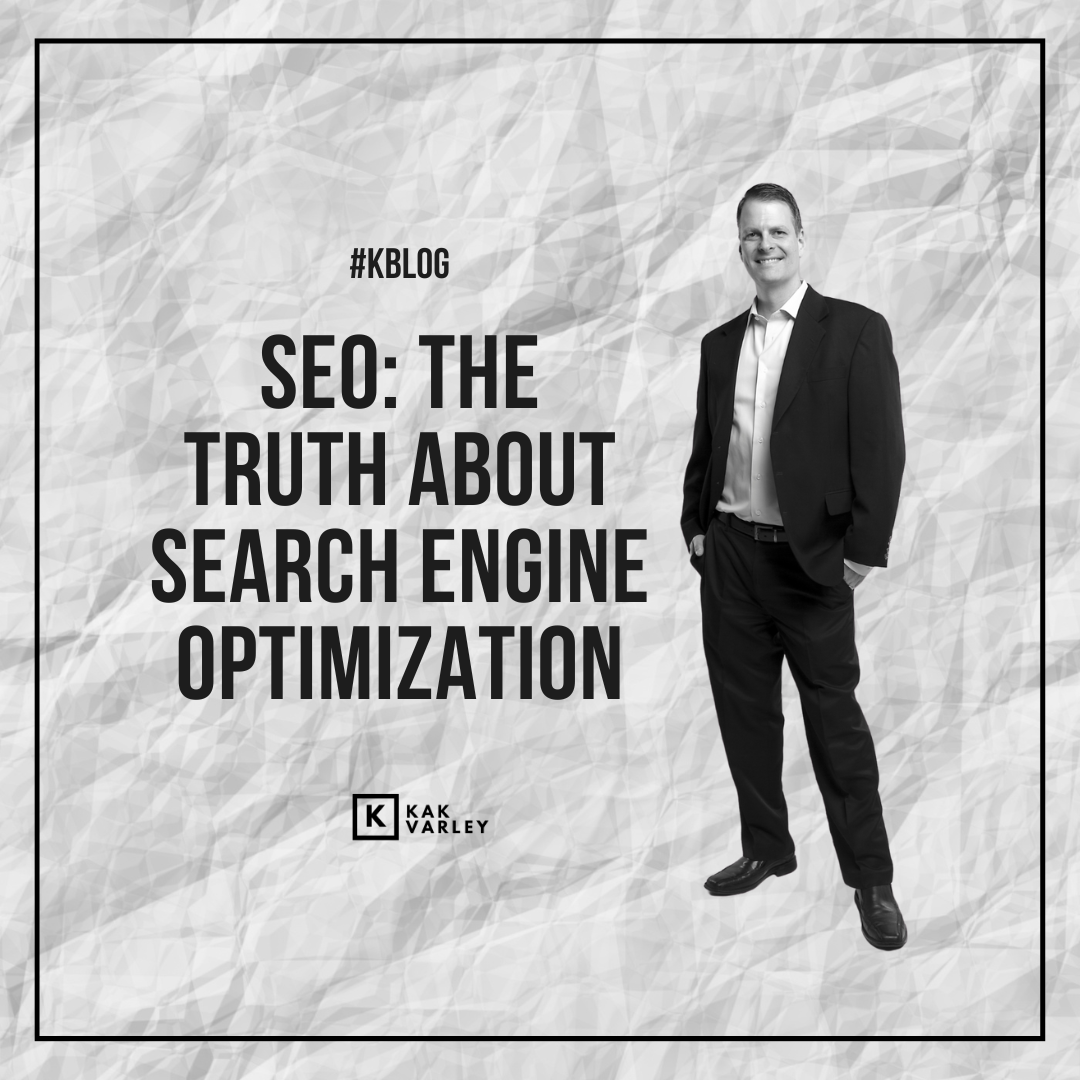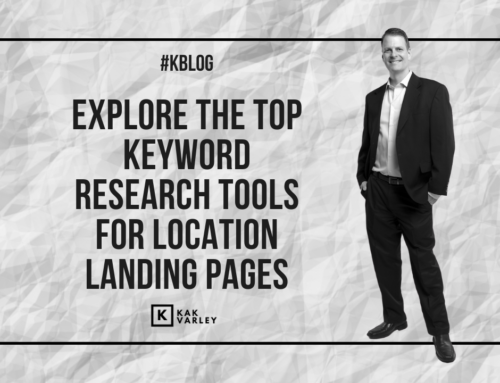
To begin, SEO stands for Search Engine Optimization. And what does that mean? It’s the practice of optimizing a digital asset (such as a website) to meet the requirements of search engines (such as Google). In optimizing towards these requirements, the goal is to get a higher ranking on search engines and, ideally, to be at the top of the first page when someone does a search query. That said, if someone searches for your type of service or product, you want to be one of the first companies to pop up in the results because most people will not research beyond the first page of a search query.
75% of people never scroll past the first page of search engines.
SEO is part of a more comprehensive marketing strategy called Inbound Marketing. Inbound Marketing is the practice of using particular tactics to lure people to your company or offer. Think of it almost like a carnival game person calling people walking by to come over and try their game. Inbound Marketing involves many activities such as digital advertising, content marketing, email marketing, and SEO. Search Engine Optimization is just one of the ingredients that help bring potential customers to a company.
However, as a digital marketing consultant, I hear a lot of negative folklore about SEO, which often stems from people’s lack of knowledge on the subject. This makes sense because it leans more toward science than it does art. Whereas Brand Marketing tends to focus on the creative side of marketing, Inbound Marketing relies heavily on analytics and behavior. Thus, Search Engine Optimization is technical at its core.
Another reason for the folklore is that Search Engine Optimization is not tangible unless you’re attuned to the analytics. While it has a name, it does not have a face, and its invisible nature leads people to believe it’s not worth a company’s time.
On the contrary, Search Engine Optimization is a significant player in the digital marketing space. It’s real, it works, and should be a part of every company’s marketing strategy. The more significant challenge will always be your investment of time and finding the right people to help you.
To understand where SEO fits in the Inbound Marketing strategy, let’s compare it with Digital Advertising:
- Digital Advertising is a quick way to gain awareness. You are essentially paying for higher rankings in search queries. The downside of online advertising is that once you stop paying to play, that visibility and those rankings disappear instantly.
- Search Engine Optimization is a fantastic long-term solution. While it’s not necessarily a ‘set it and forget it’ activity, the work results remain in effect over a more extended period, sometimes stretching years.
That said, I would be amiss if I did provide some gems as a digital marketing consultant. While there are many talented people in this space, there are just as many money-grabbing outfits that add to companies’ negative experiences. I feel I must serve you with some myth-busting and realities so that you can go into SEO level-footed.
Transparency is of the Utmost Importance
Over the years, companies like Google have grown tired of all the people who figure out their algorithms and game them to skip the line in rankings. Long ago, it used to be that people would jam a bunch of keywords behind a home page (keyword stuffing) to get to the top of search queries. When that happened, Google changed its algorithms. But this scenario kept repeating itself – new algorithms, then MIT geeks figure out the algorithms, the geeks game the system, and repeat…until Google just had enough of the nonsense. More so than ever, Google wants people to be upfront and honest with who they are and what they do.
This leaves for very little creativity when it comes to picking your keywords. The best way I can explain this is through a couple of real-world examples:
- I had a customer who was a therapist who hired me for Inbound Marketing. Within her team, she had a creative writer. To no fault, the creative writer was doing his job and kept coming up with esoteric and differentiating alternatives to “therapist.” The problem was that no one searched for those terms. What they searched for was more like, “therapist near me.”
- I had another customer who was told he should structure his business around something that cannot be answered on Google. While they may be a fantastic approach in the real world, there’s no point in delving into Inbound Marketing with that strategy.
So, if you’re looking to do Inbound Marketing for your business, stop yourself from ‘putting lipstick on a pig.’ In other words, be brutally honest about what your company does when establishing your keyword plan. For example, if you’re a priest, use “Priest” as your keyword rather than some fancy term like “Embracer of All Things Heavenly.”
Transactional Over Informational Keywords
In the world of SEO, there are four types of keywords:
- Informational keywords – searchers looking for an answer to a specific question or general information.
- Navigational keywords – searchers intending to find a specific site or page.
- Commercial keywords – searchers looking to investigate brands or services.
- Transactional keywords – searchers intending to complete an action or purchase
If you take a closer look at the list, you’ll notice that the Informational side of the spectrum is more about people serving themselves. Whereas the Transactional side of the spectrum is more about being served. This is a crucial distinction to understand as you pick your keywords.
You must include all four of these keywords in your SEO strategy to capture the attention at all stages of a potential customer’s buying journey. However, suppose you are trying to sell anything online. In that case, you need to pay close attention to the Transactional keywords and lean on them heavily because this is what Google is looking for to understand who you are, what you offer, and how to rank your business online.
SEO Helps More Than Just the Website
Believe it or not, SEO does not live in a vacuum. The best example of this is how it interacts with digital advertising. Let’s look specifically at how this works in the Google Ads world.
In most digital ads, you will have a call to action (CTA) that leads to a web page. That web page intends to further your interest to either get more information or make a purchase. When you begin setting up the ad, the critical part is that Google will crawl and pull the significant keywords from the page and then create headlines and descriptions for you.
To take it a step further, you have to be sure that the search keywords you define for the ad must be aligned with the keywords you have on the web page. Why is this important?
Contrary to negative beliefs, Google wants you to be successful in digital advertising because if you’re successful, you’ll spend more money with them, and then they’re successful. To attain this mutual benefit, you have to put yourself in the mind of the people doing the searching. When people search, they fully intend to get the answer they want. Otherwise, searchers become frustrated, and Google does not want that.
So when you are setting up an ad, the thought process and set up is very linear:
Search Keywords = Ad Headline and Description Keywords = Web Page Keywords
All the keywords must be the same across the entire ad journey so that people feel confident is what they’re looking for, and SEO is the foundation of the digital ad’s success.
I should add here that if you want to reduce your costs in ad spending, it is recommended that you stick with the Transactional keywords. As an example, rather than using “pricing strategies” as your ad keyword, use something like “pricing consultant” or “pricing services.” This way, you’ll reduce the number of ‘Looky Loo’s’ out there.
Too Good to be True
Now it’s time to play a game of “Too Good to be True,” which is essentially just me (your digital marketing consultant) telling you what to watch out for as you search for SEO services.
- “This will take no time at all” – Wrong! SEO is a venture that takes a long time to craft, analyze, and optimize. It involves optimizing your content, having a highly optimized website, implementing a hyperlink structure, asset stacking, directory listings, high-authority backlinks, etc. That’s not an overnight experience.
- “We can get you 1000 backlinks” – Run for the hills, Folks! Did you know that Google grades all websites with an authority score? An authority score tells them how valuable your website is to the general public. If the website domains linking to your website are high in authority, it helps your authority. If the website domains linking to your website are low in authority, it hurts your authority. So if these outfits can’t furnish the authority scores of the backlinks, it’s a scam.
- “SEO made easy” – Hold on. Let me break out my B.S. Meter. First of all, if it were easy, every one of us would be doing it and successful at doing it. The fact that you need analyzing tools to accomplish the work is another sign it’s not easy. This stuff is technical and requires actual knowledge to get the job done. Don’t believe the hype.
Are you looking for a digital marketing consultant? Kak Varley Digital Marketing Agency in Phoenix can help. Contact us below!
Search our hashtags #kakvarley #kakapproved #ktip #kblog



